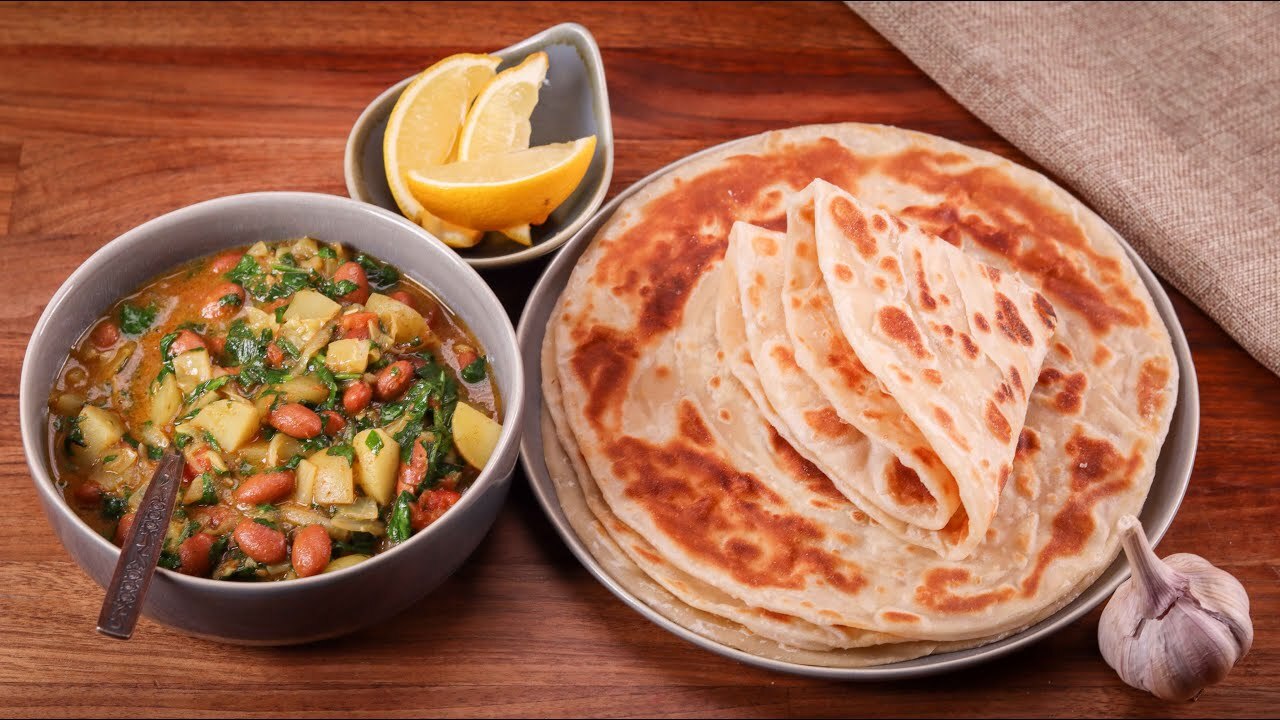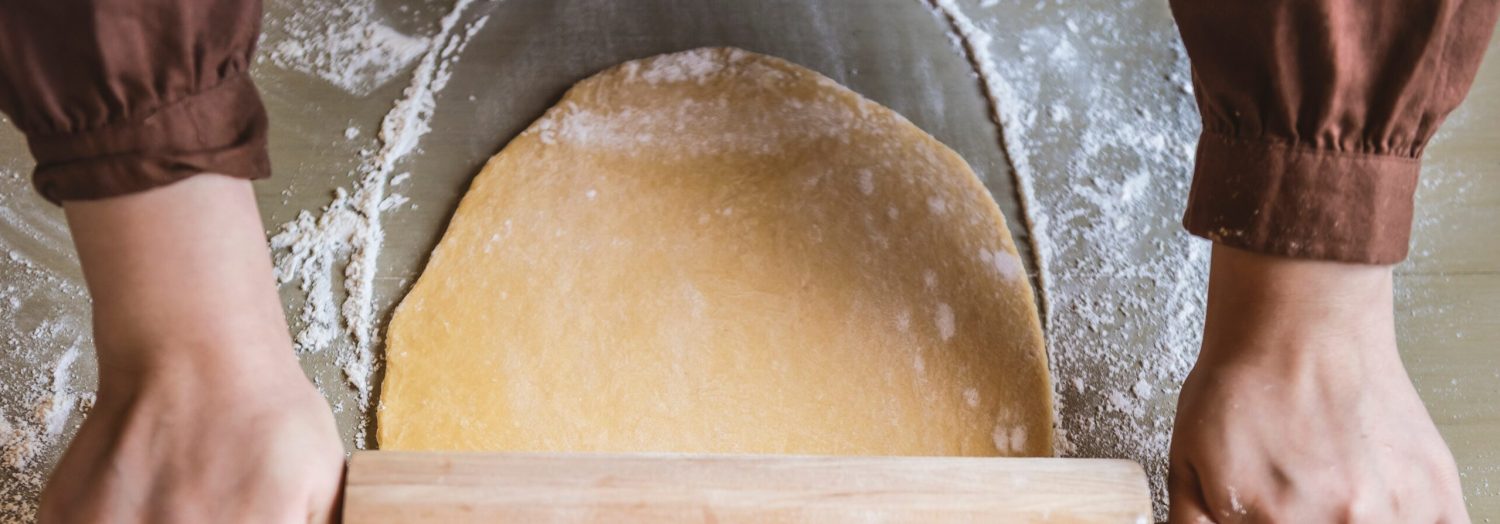Chapati is a staple in East African cuisine, known for its simplicity and versatility. This flatbread is perfect for scooping up stews, curries, or simply enjoying on its own. With just a few basic ingredients, you can create a delicious and satisfying bread that complements any meal.
The ingredients for this recipe are quite common and should be easily found in most supermarkets. However, if you don't usually keep all-purpose flour or vegetable oil in your pantry, make sure to pick them up. These are essential for achieving the right texture and flavor in your chapati.

Ingredients for Chapati East African Bread Recipe
Flour: The base of the chapati, providing structure and texture.
Salt: Enhances the flavor of the bread.
Water: Helps to form the dough and achieve the right consistency.
Vegetable oil: Adds moisture and helps to cook the chapati to a golden brown.
Technique Tip for Making Chapati
When rolling out the dough, ensure that your rolling pin and surface are lightly dusted with flour to prevent sticking. This will help you achieve an even, thin chapati that cooks uniformly.
Suggested Side Dishes
Alternative Ingredients
all-purpose flour - Substitute with whole wheat flour: Whole wheat flour adds more fiber and nutrients, giving the chapati a slightly nuttier flavor and a denser texture.
all-purpose flour - Substitute with gluten-free flour blend: For those with gluten intolerance, a gluten-free flour blend can be used, though the texture may be slightly different.
salt - Substitute with sea salt: Sea salt can provide a more complex flavor due to its mineral content.
warm water - Substitute with milk: Using milk instead of water can make the chapati softer and add a slight richness to the flavor.
vegetable oil - Substitute with olive oil: Olive oil can add a subtle fruity flavor and is a healthier fat option.
vegetable oil - Substitute with ghee: Ghee, or clarified butter, is traditional in many South Asian breads and adds a rich, buttery flavor.
Other Alternative Recipes Similar to Chapati
How to Store or Freeze Chapati
- Allow the chapati to cool completely before storing. This prevents condensation, which can make the bread soggy.
- Place the cooled chapati in an airtight container or a resealable plastic bag. Ensure you remove as much air as possible to maintain freshness.
- Store the container or bag at room temperature if you plan to consume the chapati within 2-3 days. For longer storage, consider freezing.
- To freeze, layer each chapati between sheets of parchment or wax paper to prevent sticking. Place the layered chapatis in a freezer-safe bag or container.
- Label the bag or container with the date to keep track of freshness. Frozen chapati can be stored for up to 3 months.
- When ready to use, thaw the chapati at room temperature for a few hours or overnight in the refrigerator.
- Reheat the thawed chapati in a hot skillet for a few seconds on each side to restore its softness and warmth. You can also microwave them for about 10-15 seconds, wrapped in a damp paper towel to prevent drying out.
How to Reheat Leftovers
- For a quick and easy method, wrap your chapati in a damp paper towel and microwave for 20-30 seconds. This will help retain its moisture and softness.
- If you prefer a more traditional approach, heat a non-stick pan over medium heat. Place the chapati in the pan and cook for about 1 minute on each side. Brush with a little vegetable oil to enhance its flavor and texture.
- For a slightly crispy texture, preheat your oven to 350°F (175°C). Wrap the chapati in aluminum foil and place it in the oven for about 5-7 minutes.
- If you have a gas stove, you can also reheat the chapati directly over the flame. Use tongs to hold the chapati and flip it quickly to avoid burning. This method gives a nice charred flavor.
- For a steam method, place a steaming basket over boiling water. Wrap the chapati in a clean kitchen towel and place it in the basket. Steam for about 2-3 minutes to make it soft and pliable.
Best Tools for Making Chapati
Large bowl: Used to mix the flour and salt together.
Measuring cups: Essential for accurately measuring the flour and water.
Measuring spoons: Used to measure the salt and vegetable oil.
Rolling pin: Helps in rolling each dough ball into a flat circle.
Frying pan: Used to cook the chapatis on medium heat.
Spatula: Useful for flipping the chapatis while cooking.
Pastry brush: Used to brush vegetable oil on each chapati while cooking.
Clean surface: Needed for kneading the dough and rolling out the chapatis.
How to Save Time on Making Chapati
Prepare ingredients in advance: Measure and mix the flour and salt ahead of time to streamline the process.
Use a stand mixer: Save time on kneading by using a stand mixer with a dough hook attachment.
Preheat the pan: Ensure the frying pan is hot before you start cooking the chapatis to speed up the cooking process.
Roll all dough balls first: Roll out all the dough balls into flat circles before you start cooking to maintain a smooth workflow.
Cook multiple chapatis: If your pan is large enough, cook two or more chapatis at the same time.

Chapati East African Bread Recipe
Ingredients
Main Ingredients
- 2 cups All-purpose flour
- 1 teaspoon Salt
- 1 cup Water Warm
- 2 tablespoon Vegetable oil
Instructions
- In a large bowl, mix the flour and salt.
- Gradually add warm water and mix until a dough forms.
- Knead the dough for about 10 minutes until smooth.
- Divide the dough into 6 equal parts and roll each into a ball.
- Roll each ball into a flat circle using a rolling pin.
- Heat a frying pan over medium heat and cook each chapati for 2-3 minutes on each side until golden brown.
- Brush each chapati with vegetable oil while cooking.
Nutritional Value
Keywords
More Amazing Recipes to Try 🙂
- Cucumber Nut Bread Recipe1 Hours 15 Minutes
- Self-Rising Flour Recipe5 Minutes
- No Knead English Muffin Bread Recipe35 Minutes
- Japanese Milk Bread Recipe50 Minutes
- Batter Buns Recipe35 Minutes
- Pepperoni Provolone Bread Recipe50 Minutes
- Dutch Crunch Rolls Recipe45 Minutes
- Buttery Basil Biscuits Recipe27 Minutes

Leave a Reply